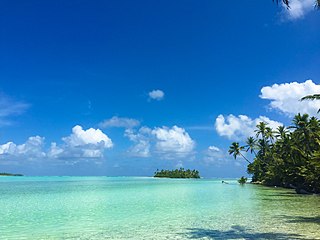West Island, one of the two major islands in the Cocos (Keeling) Islands, offers a serene escape with its spectacular sandy beaches and vibrant coral reefs. As a part of Australian territory, this island is characterized by its tranquil atmosphere, making it an ideal location for relaxation and nature exploration. Visitors can enjoy a range of activities from snorkeling among dazzling marine life to bird watching, capturing a unique blend of cultural and natural beauty.
Before traveling to West Island, check the local weather forecasts and seasonal activities to fully optimize your experience in this tropical paradise.
Consider renting a bike or scooter to explore West Island at your leisure, allowing you to discover secluded beaches and local eateries independently.
West Island: A Tropical Gem in the Indian Ocean
| Country | Cocos Keeling Islands (Australia) |
| Time in West Island | GMT+6:30 |
| Language spoken | English |
| Population | 120 (Estimated, 2023) |
| Currency | Australian Dollar (AUD $) |
| Airports | Cocos (Keeling) Islands Airport (2 mi / 3.2 km). |
West Island, the capital of the Cocos Keeling Islands, is a serene tropical paradise in the Indian Ocean. It serves as the administrative heart of this external Australian territory but maintains a charming small-town vibe with its population of just around 120 residents. This idyllic island offers pristine beaches and a rich historical backdrop, being discovered by Captain William Keeling in 1609 and later becoming a critical site for maritime communication and World War II operations.
Where is West Island?
West Island enjoys a strategic and picturesque position in the southern group of the Cocos Keeling Islands, surrounded by the vast Indian Ocean.
Distances:
| Route | Distance by air | Time by air |
| From Perth to West Island | 1774 mi (2855 km) | Approx. 4.5 hours |
What is West Island famous for?
West Islandis renowned for its spectacular coral reefs, white sandy beaches, and vibrant marine life. It is a haven for snorkelers, divers, and those yearning for tranquil shores away from the hustle and bustle of city life.
History
1609 – Discovery and Early Observations
Cocos (Keeling) Islands, including West Island, were first spotted by Captain William Keeling of the East India Company in 1609. The initial discovery brought little immediate interest, but it laid the groundwork for future explorations and eventual settlement. The uninhabited islands remained largely overlooked until the 19th century due to their remote location in the Indian Ocean.
1825 – Settlement and Development
The first notable attempt at settlement came in 1825 when English merchant John Clunies-Ross arrived and subsequently began the establishment of a small, permanent community. The Clunies-Ross family devised a plantation economy, initially focusing on coconut harvesting for copra and oil production, which shaped the economic landscape of the islands for decades.
1955 – Transfer to Australian Control
Political sovereignty changed in 1955 when the islands were transferred from British to Australian control. This transition marked a new era in the administrative and socio-economic development of West Island. Under Australian governance, improved infrastructure, healthcare, and education became priorities, along with developing tourism as a potential economic driver.
1978 – Modernizing and Expanding
By 1978, substantial modernization had taken place. The Australian government recognized the unique environment of the islands and initiated conservation efforts to protect its diverse marine life and coral atolls. West Island evolved with improved air and sea connectivity, enhancing its appeal as a remote yet accessible destination for tourists.
2000s – Ecotourism and Preservation
In recent years, West Island has seen a surge in ecotourism. Efforts have been made to balance human activity with environmental preservation. The introduction of eco-friendly practices ensures that the natural beauty of West Island, from its pristine beaches to its rich underwater ecosystems, is maintained for future generations while providing sustainable growth opportunities for the local community.
Visit West Island
What to see and do in West Island, Cocos Keeling Islands (Australia).
Visiting West Island offers a plethora of activities and sights that cater to both adventure enthusiasts and those seeking tranquility. Here is what you can explore:
- Stroll along the white sandy beaches such as Trannies Beach, known for its serene setting and crystal-clear waters.
- Engage in water sports like snorkeling and scuba diving at the coral reefs, home to a vibrant array of marine life.
- Visit the Cocos Islands District High School to see its unique educational system.
- Explore the Home Island, a short ferry ride away, to learn about the local Cocos Malay culture.
- Enjoy bird-watching, as the islands are a haven for various migratory birds.
Annual Events in West Island
West Island hosts several recurring events that reflect its diverse community and culture. Notable among these are the Cocos (Keeling) Islands Marathon in July, which attracts participants from various countries, and the Lagoon Swim, held in November, offering a festive and competitive swimming experience in the island’s turquoise lagoons.
Best time to visit West Island
The best time to visit West Island is between April and October, when the weather is most favorable. During these months, the island enjoys mild temperatures, lower rainfall, and calmer sea conditions ideal for outdoor activities and exploration.
Is West Island worth visiting?
West Island is undeniably a gem within the Cocos Keeling archipelago. Its pristine beaches, unique culture, and vibrant marine life make it a worthwhile destination for those seeking both adventure and relaxation. However, visitors should be prepared for the remote nature of the island, which can mean higher travel costs and limited access to some modern conveniences. Despite these challenges, the natural beauty and tranquility of West Island provide a sublime escape from the bustling world, making it a destination that can truly satisfy the desires of a diverse array of travelers.








